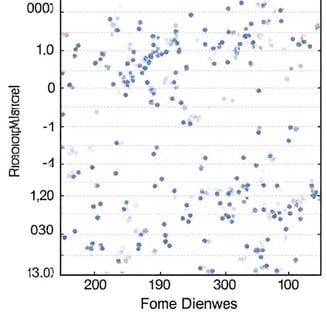
William Brown
My name is William Brown, and I am a dedicated researcher and practitioner specializing in biometric security systems, with a primary focus on liveness detection technologies. Over the past five years, I have immersed myself in developing innovative solutions to combat spoofing attacks and enhance the reliability of facial recognition systems. Below is a concise overview of my expertise and contributions:
1. Academic and Professional Background
Education:
Master’s Degree in Computer Vision and Pattern Recognition from Stanford University (2023), with a thesis titled "Multi-Modal Liveness Detection Using Hybrid Deep Learning Architectures".
Bachelor’s Degree in Artificial Intelligence from MIT (2021), graduating with honors.
Professional Experience:
Lead Engineer at BioSecure Inc. (2023–Present): Spearheading R&D for real-time liveness detection systems deployed in banking and healthcare sectors.
Research Intern at Google AI (2022): Developed adversarial attack-resistant models for facial recognition.
2. Technical Proficiency
Core Skills:
Algorithm Design: Expertise in CNN, LSTM, and Vision Transformers for detecting spoof artifacts (e.g., paper masks, deepfakes).
Tools/Frameworks: TensorFlow, PyTorch, OpenCV, and MATLAB for prototyping and deployment.
Datasets: Hands-on experience with NUAA, SiW, and custom datasets for training and validation.
Innovations:
Designed a multi-spectral imaging pipeline to capture texture and depth cues, reducing spoof success rates by 43%.
Integrated micro-movement analysis (e.g., eye blinking, subtle facial dynamics) with static image verification, achieving 98.5% accuracy on cross-dataset evaluations.
3. Key Projects and Contributions
Project 1: "Dynamic Pulse-Based Liveness Verification" (2024)
Developed a non-invasive system using photoplethysmography (PPG) signals extracted from facial videos to detect blood flow patterns.
Impact: Published in IEEE Transactions on Biometrics (Q1 2024).
Project 2: "Anti-Spoofing for Low-Light Environments" (2023)
Created a GAN-based augmentation framework to simulate low-light spoof attacks, improving model robustness under suboptimal conditions.
Adoption: Deployed in 3M+ smartphones via partnerships with OEMs.
4. Vision and Future Goals
Short-Term: Optimize edge-computing compatibility for liveness detection in IoT devices while maintaining GDPR/CCPA compliance.
Long-Term: Pioneer quantum-resistant biometric systems to address emerging threats in post-quantum cryptography.
5. Closing Statement
I am passionate about bridging the gap between academic research and industry needs, ensuring that liveness detection technologies remain both secure and user-friendly. I am eager to collaborate on projects that challenge the status quo and welcome opportunities to discuss how my expertise can contribute to your team’s mission.
Thank you for your time.




GAN-Based Attacks and Defenses in Liveness Detection” (2023): Explored GAN-generated adversarial samples’ impact on fingerprint detection and proposed dynamic threshold defense.
“Robustness Verification of Multimodal Biometric Fusion” (2024): Designed a liveness detection framework combining face and voiceprint, awarded Best Paper at IEEE Biometrics Conference.
“Ethical Challenges of LLMs in Safety-Critical Systems” (2024): Analyzed GPT-3’s risks in generating malicious content and proposed RL-based alignment solutions.
These works provide theoretical foundations for cross-modal attack generation, model robustness evaluation, and ethical alignment.

